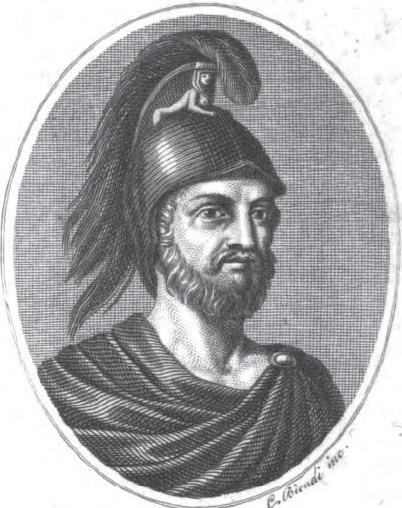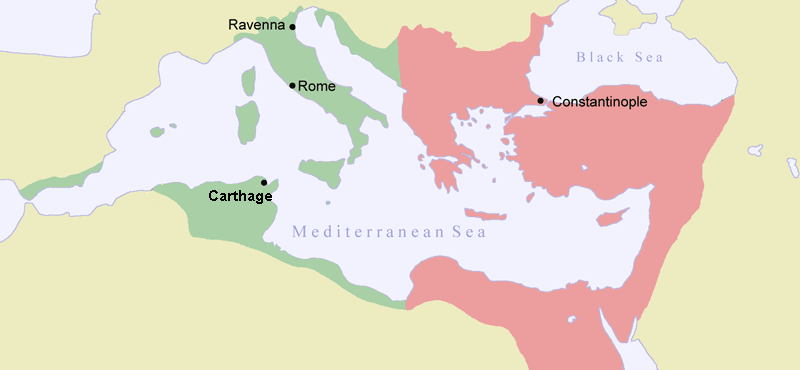|
Maktorion
Maktorion or Mactorium ( Greek: ), was an ancient town of Sicily, in the neighborhood of Gela, mentioned by Herodotus (vii. 153), who tells us that it was occupied by a body of Geloan citizens, who were driven out from their country, and were restored to it by Telines, the ancestor of Gelon. The name is also found in Stephanus of Byzantium (''s. v.''), who cites it from Philistus, but no mention of it occurs in later times. The only clue to its position is that afforded by Herodotus, who calls it a city above Gela, by which he must mean further inland. Cluverius conjectures that it may have occupied the site of Butera, a town on a hill about 13 km inland from Gela, (Cluver. ''Sicil.'' p. 363), the editors of the Barrington Atlas of the Greek and Roman World place Maktorion at the ruins and archaeological site at Monte Bubbonia in the modern '' comune'' of Mazzarino, Province of Caltanissetta The Province of Caltanissetta ( it, provincia di Caltanissetta; scn, pruvincia d ... [...More Info...] [...Related Items...] OR: [Wikipedia] [Google] [Baidu] |
Monte Bubbonia
Monte Bubbonìa is a hill located in the comune of Mazzarino, Sicily, Mazzarino, about twenty kilometres from the city of Gela. It consists of three platforms, descending from west to east (i.e. the westernmost platform is also the highest). The site is reached by travelling along the SS 117 Gela-Catania, taking the turn-off for Piazza Armerina, driving for 9 kilometres, until a side road appears on the left, the old road to Mazzarino, marked by a sign which shows the street on an ancient Roman route map known as the Itinerarium Antonini. The shape of the hill, from a geological point of view, is relatively recent, with the Miocene limestone base covered by Pleistocene marl with silt and quartz grains, then finally by very red sand which is very crumbly and dusty. Below the curb of a dirt road which runs up the east side of the hill towards the acropolis, there is a chamber dolmen, the shape of which has similarities to structures in Sardinia and Apulia. On the summit of the m ... [...More Info...] [...Related Items...] OR: [Wikipedia] [Google] [Baidu] |
Greek Language
Greek ( el, label= Modern Greek, Ελληνικά, Elliniká, ; grc, Ἑλληνική, Hellēnikḗ) is an independent branch of the Indo-European family of languages, native to Greece, Cyprus, southern Italy (Calabria and Salento), southern Albania, and other regions of the Balkans, the Black Sea coast, Asia Minor, and the Eastern Mediterranean. It has the longest documented history of any Indo-European language, spanning at least 3,400 years of written records. Its writing system is the Greek alphabet, which has been used for approximately 2,800 years; previously, Greek was recorded in writing systems such as Linear B and the Cypriot syllabary. The alphabet arose from the Phoenician script and was in turn the basis of the Latin, Cyrillic, Armenian, Coptic, Gothic, and many other writing systems. The Greek language holds a very important place in the history of the Western world. Beginning with the epics of Homer, ancient Greek literature includes many works of l ... [...More Info...] [...Related Items...] OR: [Wikipedia] [Google] [Baidu] |
Barrington Atlas Of The Greek And Roman World
The ''Barrington Atlas of the Greek and Roman World'' is a large-format English language atlas of ancient Europe, Asia, and North Africa, edited by Richard J. A. Talbert. The time period depicted is roughly from archaic Greek civilization (pre-550 BC) through Late Antiquity (640 AD). The atlas was published by Princeton University Press in 2000. The book was the winner of the 2000 Association of American Publishers Award for Best Professional/Scholarly Multivolume Reference Work in the Humanities. Overview The main (atlas) volume contains 102 color topographic maps, covering territory from the British Isles and the Azores and eastward to Afghanistan and western China. The size of the volume is 33 x 48 cm. A 45-page gazetteer is also included in the atlas volume. The atlas is accompanied by a map-by-map directory on CD-ROM, in PDF format, including a search index. The map-by-map directory is also available in print as a two-volume, 1,500 page edition. According to the edit ... [...More Info...] [...Related Items...] OR: [Wikipedia] [Google] [Baidu] |
Ruins In Italy
Ruins () are the remains of a civilization's architecture. The term refers to formerly intact structures that have fallen into a state of partial or total disrepair over time due to a variety of factors, such as lack of maintenance, deliberate destruction by humans, or uncontrollable destruction by natural phenomena. The most common root causes that yield ruins in their wake are natural disasters, armed conflict, and population decline, with many structures becoming progressively derelict over time due to long-term weathering and scavenging. There are famous ruins all over the world, with notable sites originating from ancient China, the Indus Valley and other regions of ancient India, ancient Iran, ancient Israel and Judea, ancient Iraq, ancient Greece, ancient Egypt, Roman sites throughout the Mediterranean Basin, and Incan and Mayan sites in the Americas. Ruins are of great importance to historians, archaeologists and anthropologists, whether they were once individual fo ... [...More Info...] [...Related Items...] OR: [Wikipedia] [Google] [Baidu] |
Ancient Cities In Sicily
Ancient history is a time period from the beginning of writing and recorded human history to as far as late antiquity. The span of recorded history is roughly 5,000 years, beginning with the Sumerian cuneiform script. Ancient history covers all continents inhabited by humans in the period 3000 BCAD 500. The three-age system periodizes ancient history into the Stone Age, the Bronze Age, and the Iron Age, with recorded history generally considered to begin with the Bronze Age. The start and end of the three ages varies between world regions. In many regions the Bronze Age is generally considered to begin a few centuries prior to 3000 BC, while the end of the Iron Age varies from the early first millennium BC in some regions to the late first millennium AD in others. During the time period of ancient history, the world population was already exponentially increasing due to the Neolithic Revolution, which was in full progress. While in 10,000 BC, the world population stood ... [...More Info...] [...Related Items...] OR: [Wikipedia] [Google] [Baidu] |
Province Of Caltanissetta
The Province of Caltanissetta ( it, provincia di Caltanissetta; scn, pruvincia di Nissa or ; officially ''Libero consorzio comunale di Caltanissetta'') is a province in the southern part of Sicily, Italy. Following the suppression of the Sicilian provinces, it was replaced in 2015 by the Free municipal consortium of Caltanissetta. It contains 22 ''comuni'', which are listed at Comuni of the Province of Caltanissetta. Its coat of arms is a red crest and two green leaf stems on top with a laurel leaf on the right and a crown in the middle. The River Salso is the main river of the province; it is long and originates in the province of Palermo, and it flows into the Mediterranean in this province at the end of the Gulf of Gela. Bordering provinces and metropolitan cities In counterclockwise order: * Province of Agrigento, west * Metropolitan City of Palermo, north-west * Province of Enna, north * Metropolitan City of Catania, north-east * Province of Ragusa, east Geography T ... [...More Info...] [...Related Items...] OR: [Wikipedia] [Google] [Baidu] |
Mazzarino, Sicily
Mazzarino ( Sicilian: ''Mazzarinu'') is a city and ''comune'' in the province of Caltanissetta in the region of Sicily, Italy. The city emerged in the second half of the 13th century. In 1507, the lords of the manor received the title Count of Mazzarini. It is home to two castles. In the 1950s, the local friary was the stage for the highly debated Mazzarino Friars case. Twin towns * Cinisello Balsamo, Italy Italy ( it, Italia ), officially the Italian Republic, ) or the Republic of Italy, is a country in Southern Europe. It is located in the middle of the Mediterranean Sea, and its territory largely coincides with the homonymous geographical ... Sources Municipalities of the Province of Caltanissetta Populated places established in the 13th century 13th-century establishments in Italy {{Sicily-geo-stub ... [...More Info...] [...Related Items...] OR: [Wikipedia] [Google] [Baidu] |
Comune
The (; plural: ) is a local administrative division of Italy, roughly equivalent to a township or municipality. It is the third-level administrative division of Italy, after regions ('' regioni'') and provinces ('' province''). The can also have the title of ('city'). Formed '' praeter legem'' according to the principles consolidated in medieval municipalities, the is provided for by art. 114 of the Constitution of Italy. It can be divided into '' frazioni'', which in turn may have limited power due to special elective assemblies. In the autonomous region of the Aosta Valley, a ''comune'' is officially called a ''commune'' in French. Overview The provides essential public services: registry of births and deaths, registry of deeds, and maintenance of local roads and public works. Many have a '' Polizia Comunale'' (communal police), which is responsible for public order duties. The also deal with the definition and compliance with the (general regulator plan), ... [...More Info...] [...Related Items...] OR: [Wikipedia] [Google] [Baidu] |
Sicily
(man) it, Siciliana (woman) , population_note = , population_blank1_title = , population_blank1 = , demographics_type1 = Ethnicity , demographics1_footnotes = , demographics1_title1 = Sicilian , demographics1_info1 = 98% , demographics1_title2 = , demographics1_info2 = , demographics1_title3 = , demographics1_info3 = , timezone1 = CET , utc_offset1 = +1 , timezone1_DST = CEST , utc_offset1_DST = +2 , postal_code_type = , postal_code = , area_code_type = ISO 3166 code , area_code = IT-82 , blank_name_sec1 = GDP (nominal) , blank_info_sec1 = €89.2 billion (2018) , blank1_name_sec1 = GDP per capita , blank1_info_sec1 ... [...More Info...] [...Related Items...] OR: [Wikipedia] [Google] [Baidu] |
Philistus
Philistus ( grc-gre, Φίλιστος; c. 432 – 356 BC), son of Archomenidas, was a Greek historian from Sicily. Life Philistus was born in Syracuse around the time the Peloponnesian War began. He was a faithful supporter of the elder Dionysius, and commander of the citadel. Cicero, who had a high opinion of his work, called him the miniature Thucydides (''pusillus Thucydides''). He was admitted by the Alexandrian critics into the canon of historiographers, and his work was highly valued by Alexander the Great. Philistus was quite wealthy. Before his rise to power, Dionysius criticized the generals of Syracuse on their poor performance against the Carthaginians. When the assembly fined Dionysius for his seditious language, Philistus stepped in to pay Dionysius' fines, with the promise to continue paying for them so long as the council saw fit to issue them. It was through Philistus' support that Dionysius was able to rise to power and control Syracuse. In 386 BC, Philistu ... [...More Info...] [...Related Items...] OR: [Wikipedia] [Google] [Baidu] |
Stephanus Of Byzantium
Stephanus or Stephan of Byzantium ( la, Stephanus Byzantinus; grc-gre, Στέφανος Βυζάντιος, ''Stéphanos Byzántios''; centuryAD), was a Byzantine grammarian and the author of an important geographical dictionary entitled ''Ethnica'' (). Only meagre fragments of the dictionary survive, but the epitome is extant, compiled by one Hermolaus, not otherwise identified. Life Nothing is known about the life of Stephanus, except that he was a Greek grammarian who was active in Constantinople, and lived after the time of Arcadius and Honorius, and before that of Justinian II. Later writers provide no information about him, but they do note that the work was later reduced to an epitome by a certain Hermolaus, who dedicated his epitome to Justinian; whether the first or second emperor of that name is meant is disputed, but it seems probable that Stephanus flourished in Byzantium in the earlier part of the sixth century AD, under Justinian I. The ''Ethnica'' Even as a ... [...More Info...] [...Related Items...] OR: [Wikipedia] [Google] [Baidu] |




